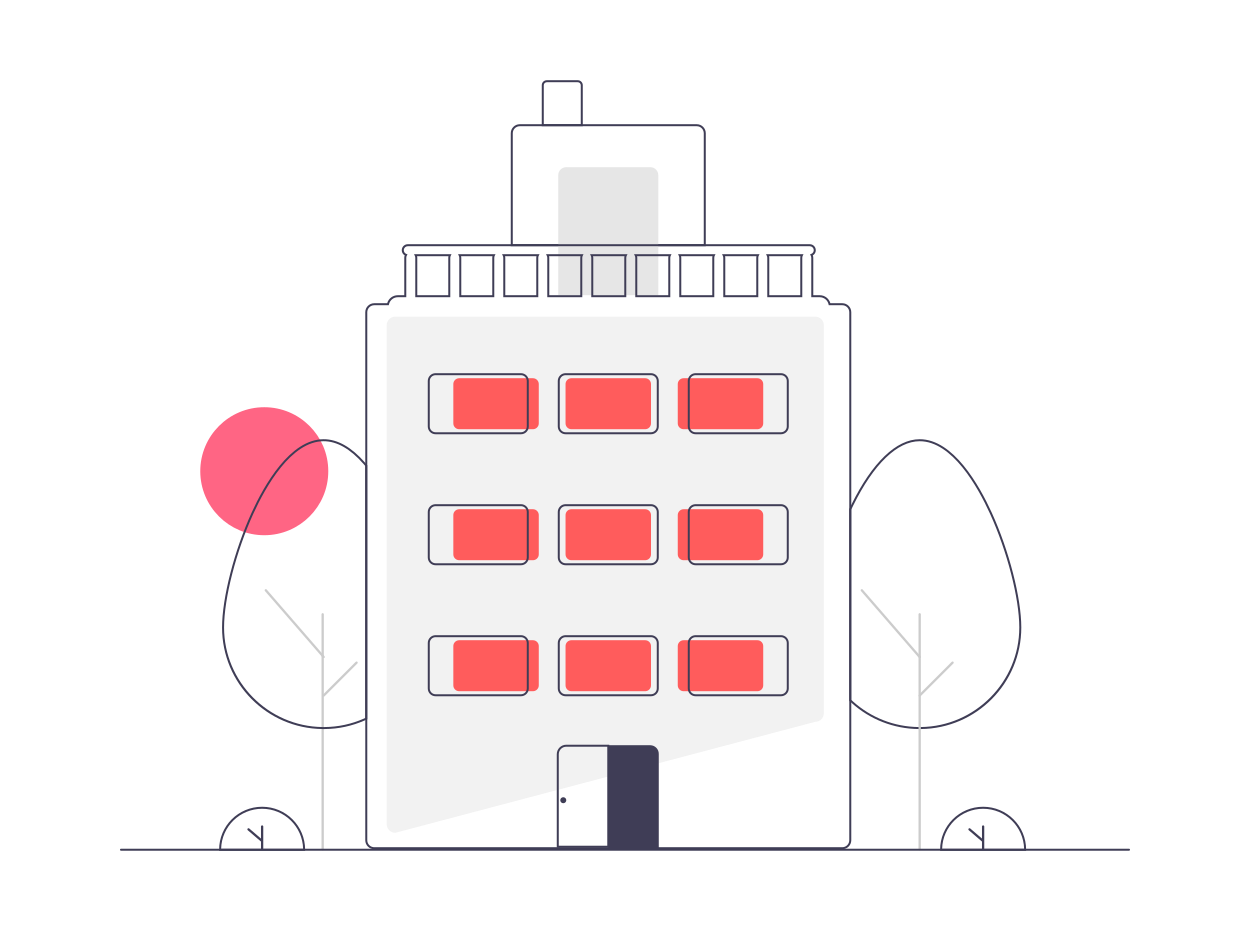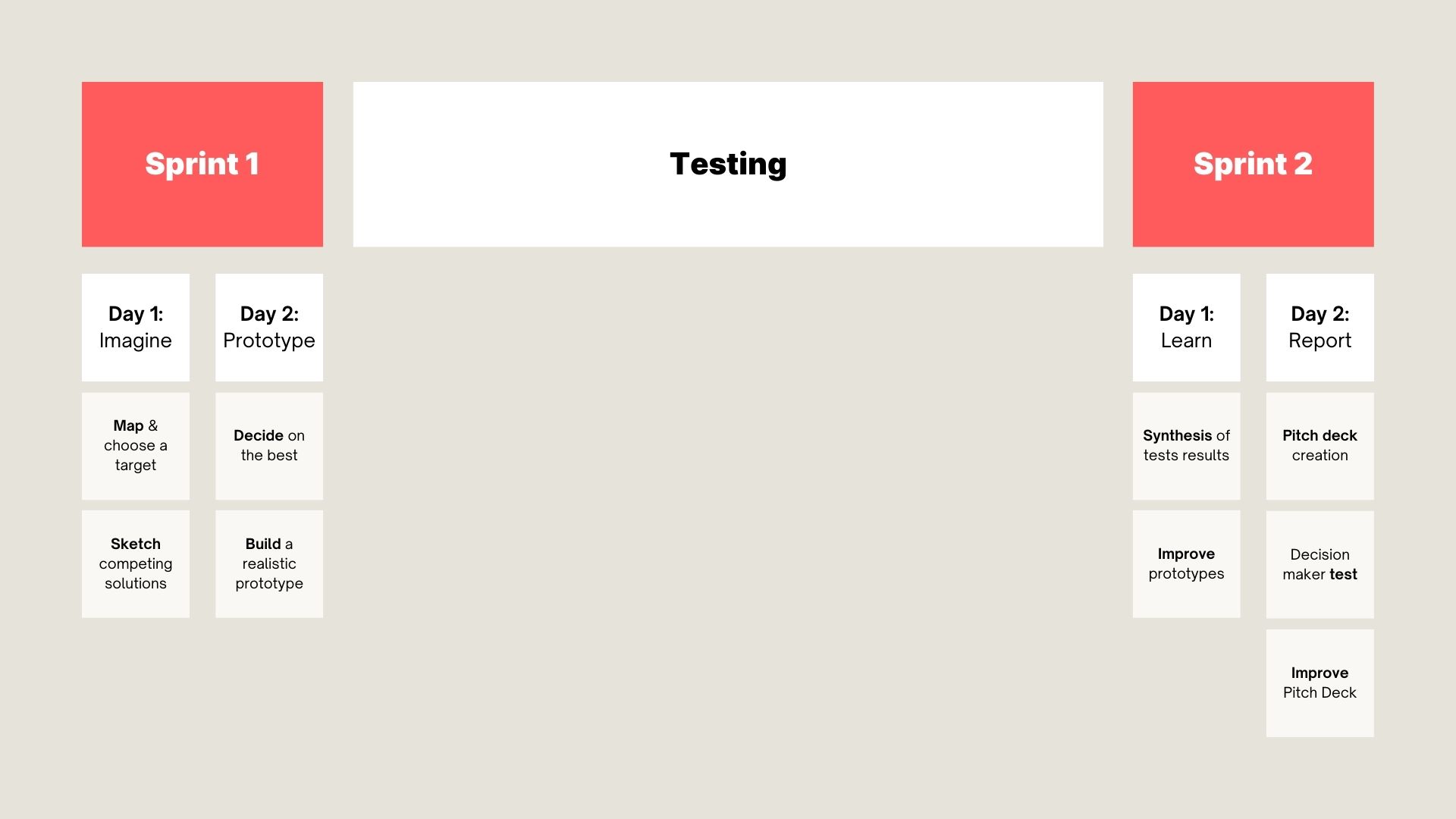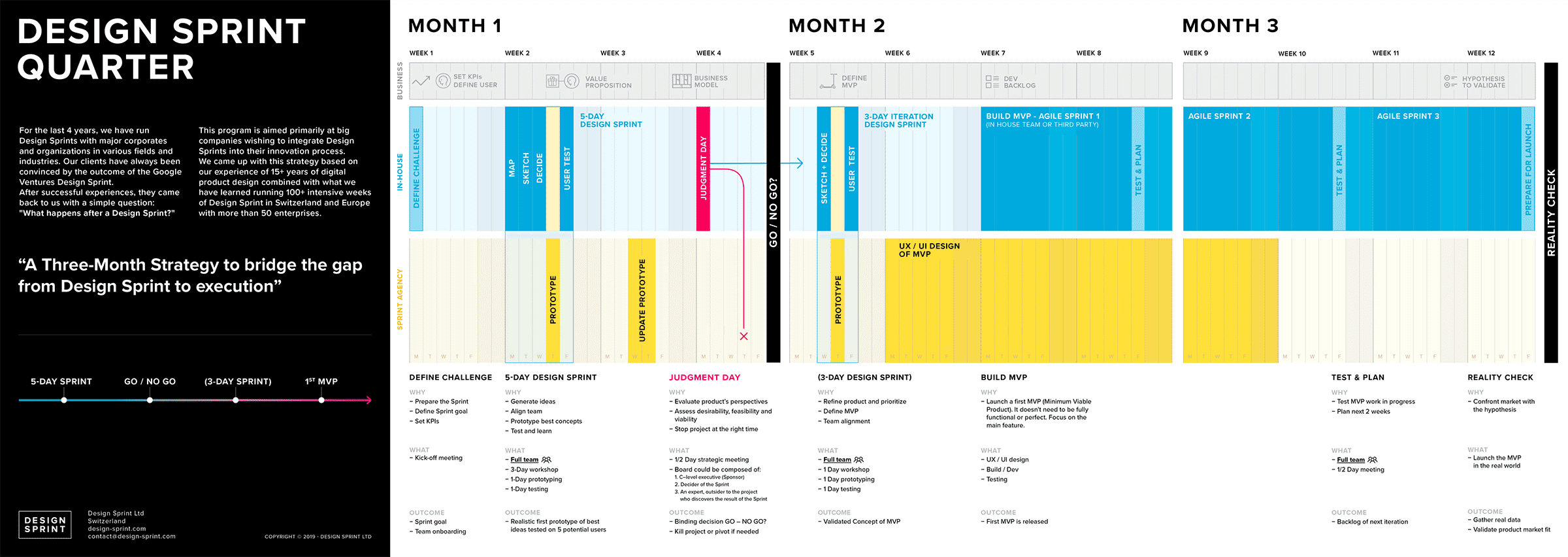How do you adapt a Design Sprint for large organizations?

In short: setup two 2-day design sprints with a 1-3 month testing time in between.
The format
In the last years, I've mostly used the following structure for design sprints that I organize within large organizations.
In the first 2-day Design Sprint we go up to the end of the prototyping.
Between these two design sprints, we do the testing phase.
The second 2-day Design Sprint is then used to make sense of all of what we learned through the testing, improve the prototypes, and make a report for the decision makers of, that shows all of the results of the design sprint.
An overview of what happens each day

-
First 2-day Design Sprint, including a condensed version of the day 1-4 from the classical design sprint with:
-
Day one:
Map & choose a target
Sketch competing solutions
-
Day two:
Decide on the best
Build a realistic prototype
-
1-3 months of testing
-
Second 2-day Design Sprint, that iterates and presents the results
-
Day one:
synthesis of tests results
refinement of the prototypes
-
Day two:
creation of a pitch deck for decision makers
test of the pitch deck with a decision maker
improvement of the pitch deck
-
The advantages of this format
More time for testing between the sprints
By having a system with two design sprints, it allows to go much deeper in the testing phase.
Where usually in the design sprint you are limited to one day test, here you can do tests with more people. And this is especially useful within a big organization where most solutions will not be targeted at only one target group. You're not just testing then the idea or prototype with the end user, but you might also get to test it with the stakeholders and employees that have to then implement that solution.
This makes obviously for a much richer testing and you get much deeper insights.
It's also pretty nice because you get to recruit people that would be hard to recruit otherwise. Here you have a bit of more flexibility as you have more time between the two sprints and are not limited to having all the tests happen on the same day.
Sleep on the idea between the sprints
There is this advice that we often give to people before making an important decision, which is sleep on it. I believe that a structure with two design sprints allows for that as you have a big amount of time between the two sprints for letting the idea take off. For reflection and for realizing how good the idea is or how bad it is.
Iterating on the idea during the second sprint
In the second design sprint, we can take the time to really analyze the results of the research and then improve the results of the first design sprint.
We are already having a second version of the idea where in a classical one week design sprint you have just one version at the end and with recommendations for change. Here, in this two design sprint format, you get the possibility to already refine the idea and make that version 2 of the idea.
Creating the report for the decision makers.
Another quality of this two days, two times design sprint format is that it gives you also a bit of time during the second design sprint to create the presentation that you will have to give or present later to a board of decision makers.
Which means that at the end of the process, you are done with that part of the project. There is no additional work for the project manager to then create a presentation as this is done directly within the second part of the design sprint.
Testing the presentation for decision makers.
One thing that I like to do in the second two days sprint is to not only create the presentation for the decision makers, but then to test it out with one of the decision makers and have him give feedback on it.
This can be done remotely through a video conference.
Here again, the end report is not just the first version of the report that will then be sent or presented to the whole group of decision maker, but it's something that has already been improved based on some feedback from one decision maker that has tested the presentation.
How others adapt it
Shorter Design Sprints
Here a few other takes on how to create shorter Design Sprints
Design Sprints on a longer time frame

The Swiss team behind Design Sprint LTD has created the so called "Design Sprint Quarter" which tries to answer to question of how do you integrate Design Sprints within large organizations.